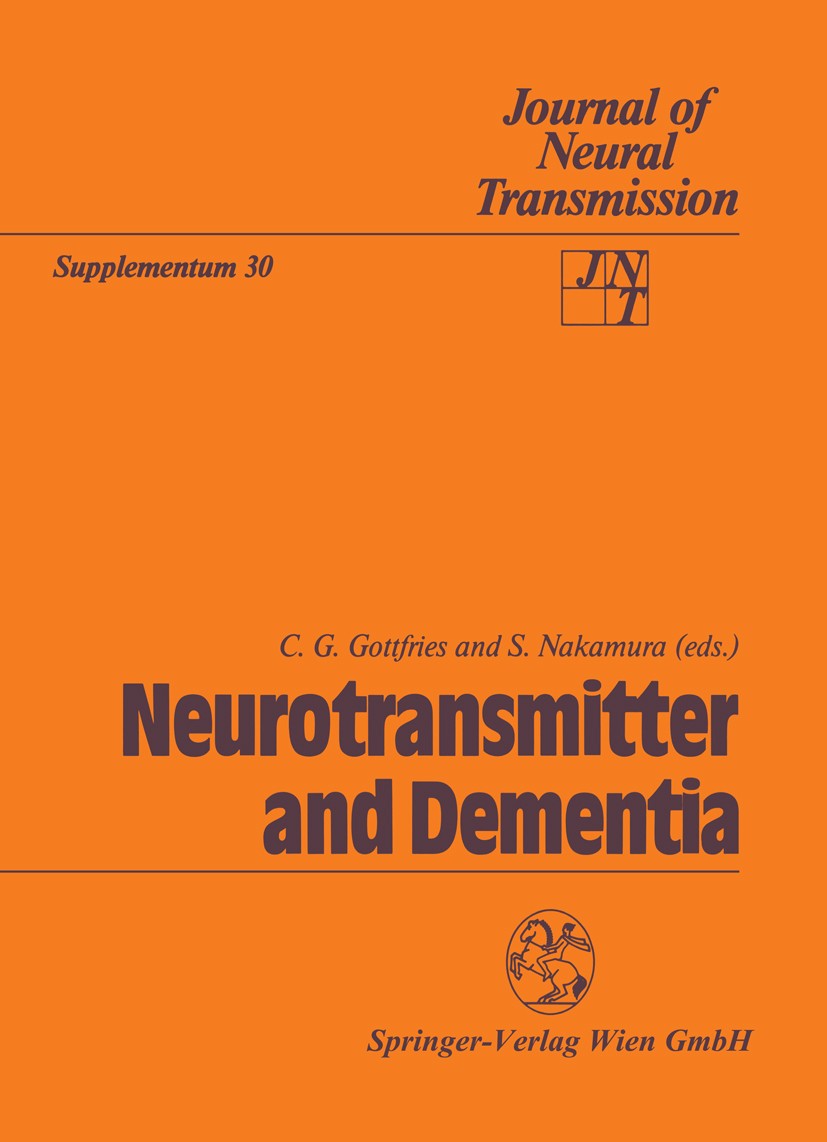| 书目名称 | Neurotransmitter and Dementia |
| 编辑 | C. G. Gottfries,S. Nakamura |
| 视频video | http://file.papertrans.cn/665/664581/664581.mp4 |
| 丛书名称 | Journal of Neural Transmission. Supplementa |
| 图书封面 |  |
| 描述 | Neurotransmitter changes taking place in the brain of patients with dementia disorders, mainly Alzheimer type dementia, are reported. Their role in the pathogenesis of Alzheimer‘s disease is discussed; and the neurochemical changes are considered as a base for formulating treatment strategies. By studying markers in the cerebrospinal fluid, diagnostic methods may be achieved that will aid in diagnosing subgroups of dememtia. |
| 出版日期 | Conference proceedings 1990 |
| 关键词 | Alzheimer; CNS; alzheimer‘s disease; brain; dementia; metabolism; neurons; neurotransmitter; research |
| 版次 | 1 |
| doi | https://doi.org/10.1007/978-3-7091-3345-3 |
| isbn_softcover | 978-3-211-82190-9 |
| isbn_ebook | 978-3-7091-3345-3Series ISSN 0303-6995 |
| issn_series | 0303-6995 |
| copyright | Springer-Verlag Wien 1990 |
 |Archiver|手机版|小黑屋|
派博传思国际
( 京公网安备110108008328)
GMT+8, 2025-11-13 10:57
|Archiver|手机版|小黑屋|
派博传思国际
( 京公网安备110108008328)
GMT+8, 2025-11-13 10:57


